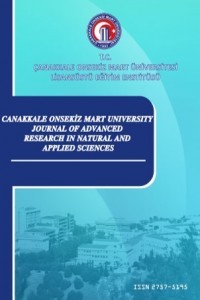Orbital Period Changes of Selected Two Semi-Deteached Binaries
Since the data obtained from satellite data are very sensitive, the minima times of the target systems have obtained from Kepler (K2) and TESS observations. A total of 14 minima times were obtained from Kepler (K2) data for the AF Gem system and 11 minima times in two different sectors from the TESS data for the RY Gem system. In this study, orbital period behaviors of semi-detached binaries (SDBs) AF Gem and RY Gem systems have investigated, together with minima times obtained from literature and satellite data. It has been observed that the orbital periods of AF Gem and RY Gem decrease. The period change rates of AF Gem and RY Gem systems are determined as -4.1×10-8 and -6.5×10-6 day/ year. The magnetic activity of the cooler components of the systems may be the reason for the periods decrease, and therefore the mass loss rates of the systems have calculated. For AF Gem and RY Gem, mass loss rate was found to be -4.4×10-8 M⊙/year and -8.2×10-7 M⊙/year, respectively. In the O-C graph of AF Gem, sinüsoidal variations also exist. Sinusoidal change may be demonstrated as being the result of a light time effect (LITE) via a tertiary body around the eclipsing pair. The minimum mass of probable third star around AF Gem has found to be 0.24 M⊙.
___
- Applegate, J. H., 1992. A Mechanism for Orbital Period Modulation in Close Binaries, Astrophysical Journal, 385, 621.
- Chambliss, C. R., 1982. AF GEM: an eclipsing triple star. Publications of the Astronomical Society of the Pacific, 94, 926.
- Erdem, A. and Öztürk, O., 2014. Non-conservative mass transfers in Algols. Monthly Notices of the Royal Astronomical Society, 441, 2.
- Gaposchkin, S., 1932. Die Bedeckungsveraenderlichen. Veroff. de Berlin-Babelsberg Sternwarte, 9, 5.
- Guthnick, P. and Prager, R., 1928. Siebzehn neue Veränderliche. Astronomische Nachrichten, 233, 35.
- Hall, D. S., Stuhlinger, T. and Wilson, J. W., 1982. UBV photometry of RY Gem. IAU Archives of unpublished observations of variable stars file number. 86, 1.
- Huang, S. S. and Struve, O., 1956. The radii and masses of eclipsing binary stars. Astronomical Journal, 61, 300.
- Irwin, J.B., 1959. Standard Light-Time Curves, Astronomical Journal, 64, 149.
- Kalv, P. V. 1980, Investigation of Selected Long Period Eclipsing Binary Stars Based on Photoelectric Observations, Tartu, PhD thesis manuscript.
- Kopal, Z., 1959. Close Binary Stars; Double Stars. The International Astrophysics Series.
- Kreiner, J.M., Kim, C-H., Nha, II-Seong, 2001. An Atlas of O-C Diagrams of Eclipsing Binary Stars, Cracow, Poland.
- Kwee, K. K. ve van Worden, H., 1956. A Method for Computing Accurately the Epoch of Minimum of an Eclipsing Variable. Bulletin of the Astronomical Institutes of the Netherlands, 12: 327-330.
- Lanza, A. F. and Rodono, M., 2002. Gravitational quadrupole-moment variations in active binaries. Astronomische Nachrichten, 323, 424.
- Maxted, P. F. L. and Hilditch, R. W., 1995. The absolute parameters of the Algol-type binary star AF Geminorum. Astronomy and Astrophysics, 301, 149.
- Paschke, A. and Brat, L., 2006. O-C Gateway, a Collection of Minima Timings. Open European Journal on Variable Stars, 23, 13.
- Pustylnik, I. Kalv, P., Aas, T., Harvig, V. and Mars, M., 2005. Light-Time Effect in Selected Semi-detached and Contact Binaries with Observable Third Components. Astronomical Society of the Pacific, 335, 321.
- Sarma, M. B. K. and Vivekananda R. P., 1997. TRY Geminorum - Revised Elements. The Astronomical Journal, 114, 800.
- Tvardovskyi, D., 2019. Third components with elliptical orbits in the eclipsing binaries: AB Cas, AF Gem, AR Boo, BF Vir and CL Aur. eprint arXiv:1911, 12415.
- Yang, Y. G., Yang, Y. and Li, S. Z., 2014. Photometric Properties for Selected Algol-type Binaries. VIII. The Triple Systems DI Peg and AF Gem Revisited. The Astronomical Journal, 147, 6.
- Yuhas, Bernard J., Reed, Phillip A. and Chambliss, Carlson R., 2013. First CCD Photometry of the Interacting Binary AF Geminorum: Evidence for a Gravitationally Bound Third Object? Bulletin of the American Astronomical Society, 45, 8. B. (2019).
- Yayın Aralığı: Yılda 4 Sayı
- Başlangıç: 2015
- Yayıncı: Çanakkale Onsekiz Mart Üniversitesi
